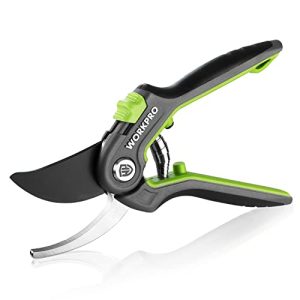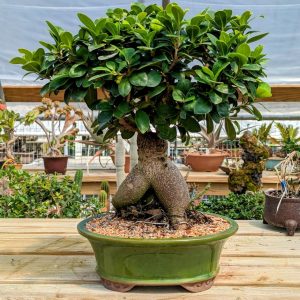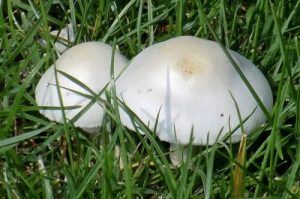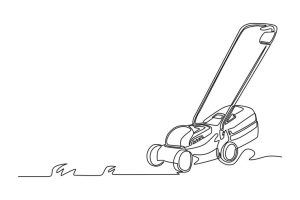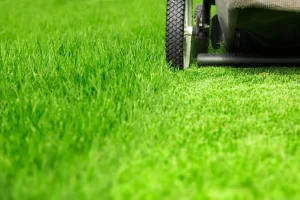Imagine a world where your plants thrive effortlessly, even if you occasionally forget to water them. Sounds like a dream, right?
Well, it’s time to make that dream a reality with self-watering plant pots. These innovative containers are revolutionizing the way you nurture your green companions. Designed to ensure your plants get just the right amount of water, self-watering pots take the guesswork out of gardening.
But how exactly do they work, and why should you consider using them? You’ll discover everything you need to know about self-watering plant pots, and why they might just become your new best friend in your gardening journey. Get ready to transform your plant care routine and watch your indoor oasis flourish like never before.
Self Watering Plant Pots
Self-watering plant pots are containers designed to deliver water to plants automatically. A reservoir at the base holds water, which is gradually absorbed by the soil, ensuring consistent moisture levels. This system reduces the need for frequent watering and supports healthier plant growth.
Self Watering Plant Pots are a game-changer for anyone who loves plants but struggles to keep them alive. These innovative pots are designed to automatically provide just the right amount of water to your plants, reducing the risk of over or under-watering. Whether you’re a seasoned gardener or a plant enthusiast with a busy schedule, these pots can make plant care effortless and enjoyable.Concept And Functionality
At their core, self-watering plant pots use a simple yet effective mechanism to maintain optimal moisture levels. They typically consist of a pot with a water reservoir at the base and a wick or similar system that draws water up to the soil as needed. This means your plants get a steady supply of water without you having to worry about daily watering. Imagine going on vacation without the stress of asking someone to water your plants. With these pots, you can fill the reservoir before you leave, and your plants will thrive in your absence. It’s like having an assistant who knows exactly when your plants are thirsty.Key Features
Self-watering pots come with several features that make them stand out: – Water Reservoir: The reservoir holds extra water that can last for days or even weeks, depending on the plant’s needs. – Wicking System: This allows water to be drawn up from the reservoir to the plant’s roots, ensuring a consistent moisture level. – Overflow Prevention: Many models include an overflow hole to prevent excess water from accumulating, which can lead to root rot. – Indicator Gauge: Some pots have a water level indicator, making it easy to see when it’s time to refill the reservoir. These features make self-watering pots not just convenient but also an efficient way to grow healthy plants. Have you ever struggled with keeping your plants hydrated just right? These pots might be the solution you’ve been looking for.
Credit: www.amazon.com
Benefits For Gardeners
Self-watering plant pots ensure consistent moisture for plants, making gardening easier and reducing watering frequency. They help prevent overwatering, promoting healthier root systems and thriving plants. Ideal for busy gardeners seeking convenience and improved plant care.
When it comes to gardening, self-watering plant pots offer a range of benefits that can transform your gardening experience. These innovative pots are designed to make life easier for you while ensuring your plants thrive. Let’s dive into some of the key advantages that make self-watering pots a game-changer for gardeners.Water Conservation
Self-watering pots are a boon for water conservation. They have a reservoir system that allows your plants to draw water as needed. This means you’re not wasting water through overwatering. You’ll notice your water bills dropping, and you’ll be contributing to environmental sustainability. Ever found yourself forgetting to water your plants for a few days? With self-watering pots, your plants will stay hydrated even if you miss a watering session.Ease Of Maintenance
Gardening can be time-consuming, but self-watering pots simplify the process. They reduce the frequency of watering, saving you time and effort. You can go on vacation without worrying about your plants. They will take care of themselves, absorbing just the right amount of water. It’s like having an assistant gardener who works tirelessly to keep your plants healthy.Improved Plant Health
Self-watering pots promote healthier plants by providing consistent moisture. This helps prevent issues like root rot and over or under-watering. Plants grow stronger and more resilient when they receive the right amount of water. You’ll see vibrant blooms and lush foliage. Imagine the satisfaction of seeing your garden flourish with minimal intervention. Doesn’t it make you wonder why you didn’t switch to self-watering pots sooner?Types Of Self Watering Pots
Self-watering plant pots are a gardener’s dream, simplifying plant care by ensuring consistent moisture levels. If you’ve ever struggled with overwatering or underwatering, these pots might be your solution. They come in various designs, each suited to different needs and preferences.
Wicking Systems
Wicking systems use a simple yet effective method to keep your plants hydrated. A wick, typically made from a fabric or rope, draws water from a reservoir up into the soil. This mimics natural capillary action and can be a great choice for those who prefer low-maintenance gardening.
These systems are ideal for small to medium-sized plants. Imagine a busy week where you barely have time to water your plants. A wicking system steps in to ensure your plants thrive even when you’re not around.
Reservoir-based Designs
Reservoir-based designs are popular for their large water capacity. They store water in a separate compartment below the plant, providing moisture as needed. A float or indicator often tells you when it’s time to refill, making plant care almost foolproof.
These designs are perfect for larger plants or if you frequently travel. Picture leaving for a week-long trip, confident that your plants will be well-cared for. This peace of mind is what makes reservoir-based pots a favorite among many plant enthusiasts.
Which type suits your lifestyle? Consider your routine and plant needs. Self-watering pots offer convenience and can enhance your plant care, making them a valuable addition to your home or garden.

Credit: www.amazon.com
Choosing The Right Pot
Self-watering plant pots help keep plants hydrated with minimal effort. They have a built-in reservoir that supplies water as needed. This design prevents overwatering and supports healthy plant growth.
Choosing the right pot for your self-watering plant can make all the difference in your gardening success. It’s not just about aesthetics, but also functionality and compatibility with your plant’s unique needs. As you explore options, focus on finding a pot that complements both your plant and your lifestyle.Size And Material Considerations
The size of your self-watering pot is crucial. A pot that’s too small can stunt growth, while one that’s too large may lead to overwatering. A good rule of thumb is to choose a pot that matches the current size of the plant’s root ball with a bit of extra space for growth. Material matters too. Plastic pots are lightweight and affordable, but may not offer the best insulation. Ceramic or terracotta pots, on the other hand, can provide better temperature regulation but are heavier and more prone to breakage. Consider how you’ll be using the pot. If it’s for an indoor herb garden, a small, decorative ceramic pot might be perfect. For outdoor plants, you might prefer durable plastic that can withstand weather changes.Matching Pot To Plant Needs
Different plants have different water requirements, which should influence your pot choice. Succulents, for example, thrive in well-draining pots, whereas tropical plants might need a pot that retains more moisture. Think about the plant’s environment. If it’s in a sunny spot, a pot with a reservoir can prevent it from drying out too quickly. For a shady area, ensure the pot doesn’t retain too much water, risking root rot. Remember, your lifestyle plays a role too. If you’re often away, a self-watering pot with a larger reservoir can keep your plants hydrated in your absence. Balancing plant needs with practical considerations ensures a thriving garden, regardless of your schedule.Diy Self Watering Solutions
Self watering plant pots are designed to keep plants hydrated without frequent watering. They use a reservoir system to supply water to the roots as needed, making plant care easier for busy gardeners.
When you think about keeping your plants hydrated, a self-watering solution can be a game-changer. These systems are not only practical but also very manageable to create on your own. You might think you need complicated gadgets, but with a little creativity, you can craft effective DIY self-watering solutions using simple materials right at home. Curious about how you can start? Let’s dive into how you can set up simple homemade systems and what materials are required.Simple Homemade Systems
Creating a self-watering system doesn’t mean breaking the bank. You can use items you probably already have. One popular method involves using a plastic bottle to create a slow-drip system. Cut the bottom off a bottle, invert it, and place it in the soil. Fill it with water, and it will gradually seep into the soil, keeping your plant hydrated over time. Another easy system involves using a cotton or nylon wick. Place one end in a container of water and the other end in the plant pot. The wick will draw water into the soil as needed. This method works well for indoor plants, especially if you’re often away from home. What systems have you tried? Sometimes, the simplest solutions are the most effective.Materials Required
Gathering materials for a DIY self-watering system is straightforward. Here’s what you might need:- Plastic bottles: Use these for a drip system. They are easily available and can be repurposed from your recycling bin.
- Cotton or nylon rope: These act as wicks. They can be found in most hardware stores or you might have some lying around from other projects.
- Scissors or a utility knife: Essential for cutting bottles and ropes to the desired length.
- Containers or bowls: These will hold the water supply for wick systems. Any small bowl or container will suffice.
Maintenance And Care
Self watering plant pots help maintain consistent moisture levels for plants. These pots have a reservoir that supplies water to the soil over time. This reduces the frequency of watering and ensures plants receive adequate hydration.
Maintaining and caring for your self-watering plant pot ensures that your plants thrive with minimal effort on your part. While these innovative pots simplify the watering process, they still require some attention to perform optimally. Simple tasks like cleaning and monitoring can make a significant difference in your plant’s health.Cleaning The Pot
Regular cleaning prevents the buildup of minerals and algae, which can clog the self-watering mechanism. A clean pot ensures that water flows freely to the plant roots. Consider cleaning the pot every few months with mild soap and water to maintain its efficiency. Remove the plant and soil before cleaning. Rinse thoroughly and allow the pot to dry completely before reassembling. This practice not only benefits the pot but also promotes a healthier environment for your plants.Monitoring Water Levels
Keep an eye on the water reservoir to ensure your plants have a consistent water supply. Over time, you’ll learn how quickly your plants consume water. This knowledge helps you adjust the water levels accordingly. Some pots come with a water level indicator. If yours doesn’t, simply check the reservoir manually. Regular monitoring prevents underwatering and overwatering, both of which can harm your plants. Isn’t it fascinating how a bit of attention can transform your plant care routine? Regular maintenance of your self-watering pot ensures your plants stay vibrant and healthy, making your indoor garden flourish with ease.Innovations In Self Watering Technology
Innovations in self watering technology are transforming how we care for plants. These advancements make gardening easier and more efficient. They save time and water while ensuring plants thrive. Self watering pots have become smart, integrating with the digital world.
Smart Pots
Smart pots use advanced materials and sensors to monitor plant needs. They adjust water delivery based on soil moisture levels. This ensures optimal hydration without overwatering. These pots often feature sleek, modern designs. They blend seamlessly into any home or garden setting.
Integration With Gardening Apps
Modern self watering pots connect with gardening apps on smartphones. These apps provide real-time updates on soil moisture and plant health. They offer reminders for fertilizing and other care tasks. Some apps even suggest ideal plants for specific pot conditions. This integration simplifies plant care for busy individuals.
Impact On Sustainable Gardening
Self watering plant pots help maintain moisture levels efficiently. They reduce water waste and support sustainable gardening practices. Perfect for busy gardeners or those in dry climates.
Self-watering plant pots have become a popular choice for those aiming to achieve sustainable gardening. These innovative pots do more than just simplify plant care; they play a crucial role in promoting eco-friendly practices. By minimizing water usage and reducing the need for constant attention, self-watering pots offer an efficient solution for gardeners who are conscious of their environmental impact.Reducing Resource Use
Self-watering pots significantly cut down on water waste. Traditional pots often lead to overwatering, where excess water drains away, taking valuable nutrients with it. Self-watering systems, however, use a reservoir that supplies water directly to the plant’s roots, ensuring they receive just the right amount. This efficient use of water also means less frequent watering, saving you time and effort. Imagine having a thriving garden without daily watering duties. This approach not only conserves water but also reduces the demand on local water supplies, especially during dry seasons.Supporting Eco-friendly Practices
Using self-watering pots can encourage other sustainable gardening practices. These pots often require less soil and fertilizer since nutrients are not washed away by excess water. This can lead to healthier plants with less environmental impact. Additionally, self-watering pots can be a great option for urban gardeners with limited space. They allow you to grow a variety of plants in small areas, supporting biodiversity even in city environments. Have you considered the impact of your gardening habits on the planet? By choosing sustainable options like self-watering pots, you contribute to a healthier ecosystem. These pots can inspire you to explore other sustainable gardening techniques, like composting or using natural pest control methods. Each small step you take towards sustainability can make a big difference. Are you ready to make your garden more eco-friendly?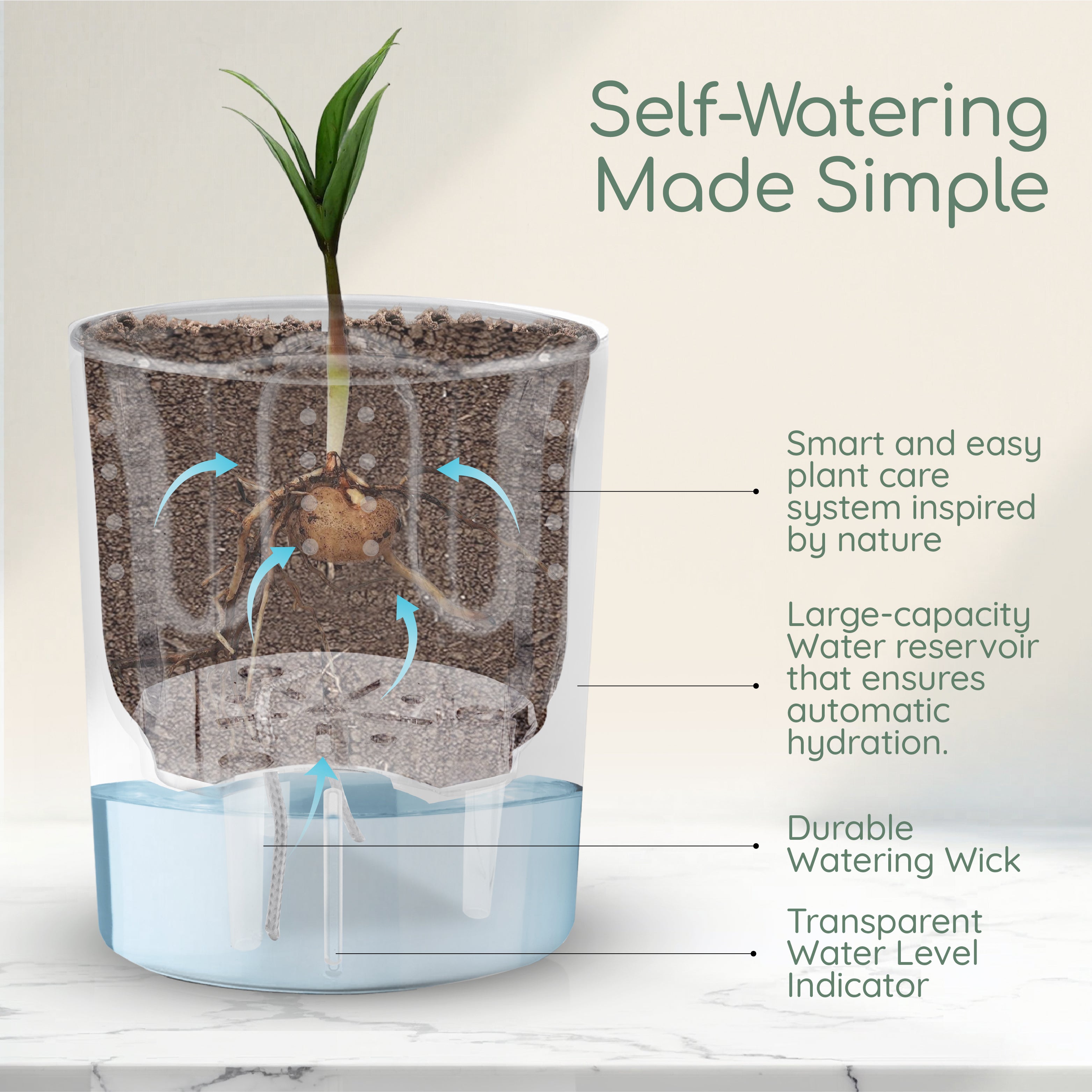
Credit: intuitiveplants.org
Frequently Asked Questions
How Does The Self-watering Pot Work?
Self-watering pots use a reservoir system to keep plants hydrated. The pot’s bottom holds water, which plants absorb through capillary action. This ensures consistent moisture, reducing the need for frequent watering and preventing overwatering. Ideal for busy gardeners, it promotes healthy plant growth and simplifies maintenance.
What Is The Disadvantage Of A Self-watering Pot?
Self-watering pots may cause root rot due to excessive moisture. They can be difficult to clean and maintain. Over time, salt and mineral build-up might affect plant health. Some plants prefer dry soil, making these pots unsuitable. They can limit plant choices and require regular monitoring.
Can You Overwater With Self-watering Pots?
Overwatering is possible with self-watering pots if the reservoir is too large or not monitored. Ensure the pot has proper drainage and regularly check the soil moisture to prevent overwatering. Adjust the water level based on the plant’s needs for optimal growth and health.
Do You Always Keep Water In A Self-watering Pot?
Yes, always keep water in a self-watering pot to ensure consistent moisture. Regularly check and refill as needed. The reservoir allows plants to draw water when required, promoting healthy growth. Proper maintenance prevents overwatering and under-watering issues.
Conclusion
Self watering pots offer a great solution for busy plant lovers. These pots help maintain moisture levels without constant attention. Plants thrive with consistent water supply, reducing risks of overwatering or underwatering. More people can enjoy gardening, even with hectic schedules.
Easy to use, they suit homes or offices. They provide convenience and healthier plants. Ideal for beginners or those with limited time. Consider adding self watering pots to your gardening tools. They simplify plant care and enhance growth. Perfect for nurturing your green space with less effort.
Enjoy vibrant, thriving plants all year round.


